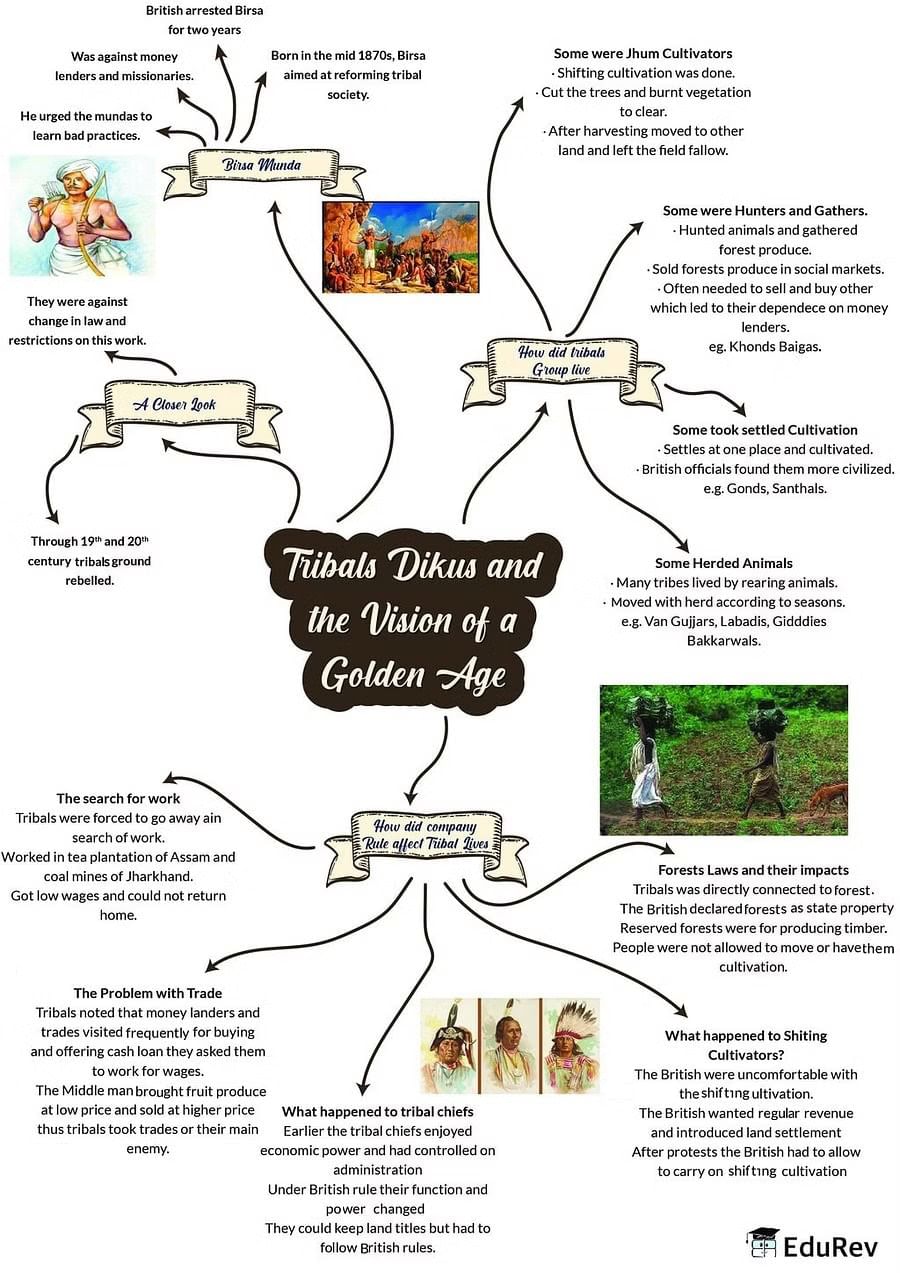Class 8 Exam > Class 8 Notes > Social Studies (SST) Class 8 > Mind Map: Tribals, Dikus and the Vision of a Golden Age
Mind Map: Tribals, Dikus and the Vision of a Golden Age | Social Studies (SST) Class 8 PDF Download

The document Mind Map: Tribals, Dikus and the Vision of a Golden Age | Social Studies (SST) Class 8 is a part of the Class 8 Course Social Studies (SST) Class 8.
All you need of Class 8 at this link: Class 8
|
69 videos|556 docs|46 tests
|
FAQs on Mind Map: Tribals, Dikus and the Vision of a Golden Age - Social Studies (SST) Class 8
| 1. What are tribals and dikus? |  |
Ans. Tribals are indigenous communities who have distinct cultural, social, and economic systems. They often reside in remote areas and have a close connection with nature. Dikus, on the other hand, refer to non-tribal or mainstream society members who have a different set of cultural norms and practices.
| 2. What is the concept of a golden age mentioned in the article? |  |
Ans. The concept of a golden age refers to an idealized period in history where there is peace, harmony, and prosperity. In the context of the article, it represents the vision of a harmonious coexistence between tribals and dikus, where both communities can benefit from each other's knowledge and way of life.
| 3. How do tribals and dikus perceive each other? |  |
Ans. Tribals often view dikus as outsiders who have significantly impacted their lives through colonization, displacement, and exploitation. Dikus, on the other hand, may perceive tribals as primitive or backward due to cultural differences. However, these perceptions can vary significantly among individuals and communities.
| 4. What challenges do tribals face in the modern world? |  |
Ans. Tribals face numerous challenges in the modern world, including land dispossession, loss of traditional livelihoods, cultural assimilation, and lack of access to basic services such as education and healthcare. These challenges often result from developmental projects, industrialization, and urbanization.
| 5. How can the vision of a golden age be achieved between tribals and dikus? |  |
Ans. Achieving the vision of a golden age requires recognizing and respecting the rights and autonomy of tribal communities. It involves promoting inclusive policies that protect their land rights, preserve their cultural heritage, and provide equitable opportunities for education and economic development. Additionally, fostering dialogue, understanding, and mutual respect between tribals and dikus is essential for bridging the gap and building harmonious relationships.
Related Searches






















